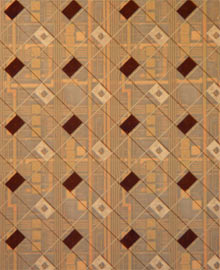Memristors Make Chips Cheaper
Entire industries and research fields are devoted to ensuring that, every year, computers continue getting faster. But this trend could begin to slow down as the components used in electronic circuits are shrunk to the size of just a few atoms. Researchers at HP Labs in Palo Alto, CA, are betting that a new fundamental electronic component–the memristor–will keep computer power increasing at this rate for years to come.

Memristors were first predicted in 1971 by Berkeley professor Leon Chua. They are nanoscale devices with unique properties: a variable resistance and the ability to remember the resistance even when the power is off.
After rediscovering Chua’s work, researchers at HP Labs built the first working memristor in May of this year. And last week, at the first ever Memristor and Memristor Systems Symposium, in Berkeley, CA, the same team showed how memristors can be integrated into functioning circuits. Their circuits require fewer transistors, allowing more components (and more computing power) to be packed into the same physical space while also using less power to function.
“We’re trying to give Moore’s Law a boost,” says lead researcher Stan Williams, a senior research fellow at HP, referring to a prediction made by Intel founder Gordon Moore that the number of transistors on a computer circuit (and therefore computer performance) should double roughly every two years.
Increasing performance has usually meant shrinking components so that more can be packed onto a circuit. But instead, Williams’s team removes some transistors and replaces them with a smaller number of memristors. “We’re not trying to crowd more transistors onto a chip or into a particular circuit,” Williams says. “Hybrid memristor-transistor chips really have the promise for delivering a lot more performance.”
A memristor acts a lot like a resistor but with one big difference: it can change resistance depending on the amount and direction of the voltage applied and can remember its resistance even when the voltage is turned off. These unusual properties make them interesting from both a scientific and an engineering point of view. A single memristor can perform the same logic functions as multiple transistors, making them a promising way to increase computer power. Memristors could also prove to be a faster, smaller, more energy-efficient alternative to flash storage.
Although memristor research is still in its infancy, HP Labs is working on a handful of practical memristor projects. And now Williams’s team has demonstrated a working memristor-transistor hybrid chip.
“Because memristors are made of the same materials used in normal integrated circuits,” says Williams, “it turns out to be very easy to integrate them with transistors.” His team, which includes HP researcher Qiangfei Xia, built a field-programmable gate array (FPGA) using a new design that includes memristors made of the semiconductor titanium dioxide and far fewer transistors than normal.
Engineers commonly use FPGAs to test prototype chip designs because they can be reconfigured to perform a wide variety of different tasks. In order to be so flexible, however, FPGAs are large and expensive. And once the design is done, engineers generally abandon FPGAs for leaner “application-specific integrated circuits.”
“When you decide what logic operation you want to do, you actually flip a bunch of switches and configuration bits in the circuit,” says Williams. In the new chip, these tasks are performed by memristors. “What we’re looking at is essentially pulling out all of the configuration bits and all of the transistor switches,” he says.
According to Williams, using memristors in FPGAs could help significantly lower costs. “If our ideas work out, this type of FPGA will completely change the balance,” he says.
Ultimately, the next few years could be very important for memristor research. Right now, “the biggest impediment to getting memristors in the marketplace is having [so few] people who can actually design circuits [using memristors],” Williams says. Still, he predicts that memristors will arrive in commercial circuits within the next three years.
Keep Reading
Most Popular
Large language models can do jaw-dropping things. But nobody knows exactly why.
And that's a problem. Figuring it out is one of the biggest scientific puzzles of our time and a crucial step towards controlling more powerful future models.
How scientists traced a mysterious covid case back to six toilets
When wastewater surveillance turns into a hunt for a single infected individual, the ethics get tricky.
The problem with plug-in hybrids? Their drivers.
Plug-in hybrids are often sold as a transition to EVs, but new data from Europe shows we’re still underestimating the emissions they produce.
Stay connected
Get the latest updates from
MIT Technology Review
Discover special offers, top stories, upcoming events, and more.